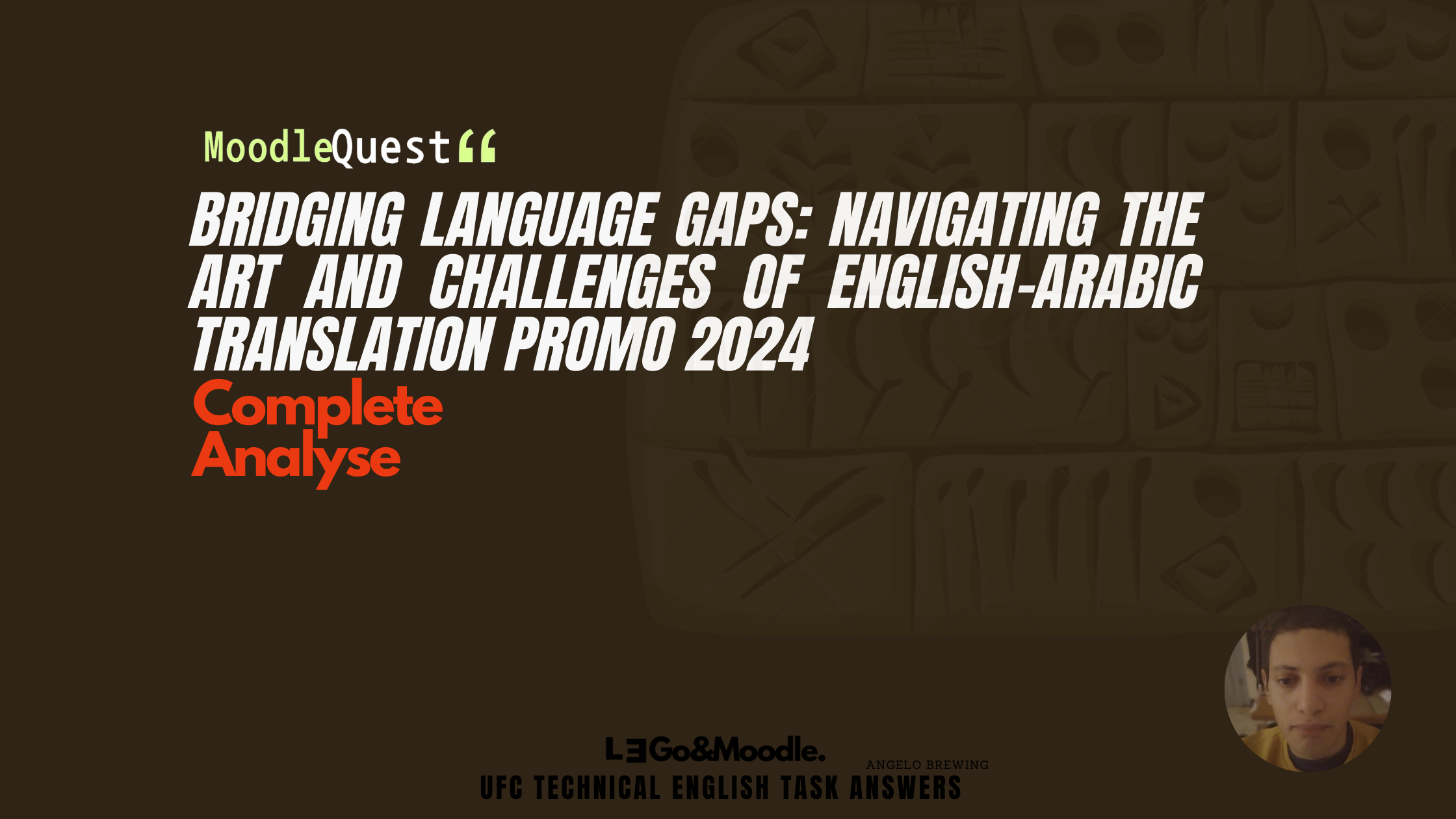1. Questionnaire for Cross-Cultural Translation Study
1.1 Introduction:
- What is the primary role of translation in bridging language and cultural gaps?
- How does translation emphasize structural and grammatical differences between English and Arabic?
- Discuss the significance of context and cultural nuances in translation.
1.2 Key Differences between English and Arabic: 4. Enumerate the linguistic and cultural differences between English and Arabic.
- Why is language proficiency and cultural awareness crucial for skilled translators?
1.3 Challenges in Translation: 6. List the challenges involved in translating between Arabic and English.
- Explain the importance of linguistic expertise, cultural understanding, and sensitivity in successful translation.
1.4 The Main Foundation Methods of Translation: 8. Define literal translation and its suitability for specific content types.
- Differentiate between dynamic equivalence and literal translation, emphasizing their purposes.
- How is transcreation utilized, and in what contexts is it considered an effective approach?
1.5 Techniques and Strategies of English - Arabic Translation: 11. Outline the two main approaches to translation techniques.
- Discuss Direct Translation Techniques, providing examples of Borrowing, Calque, and Transliteration.
- Explain Indirect Translation Techniques, highlighting Modulation, Equivalence, and Adaptation.
- Why is mastering these techniques essential for accurate and culturally appropriate translations?
- How do these techniques contribute to effective communication between English and Arabic speakers?
Conclusion: 16. Summarize the key takeaways regarding the importance of translation, linguistic differences, and effective techniques in bridging language gaps.
- Reflect on the role of skilled translators in fostering cross-cultural communication.
These questions aim to assess your understanding of the key concepts discussed in the context and encourage thoughtful responses related to cross-cultural translation.
- The primary role of translation is to facilitate communication across language and cultural barriers. It serves as a bridge that allows people from different linguistic and cultural backgrounds to understand each other.
- Translation emphasizes structural and grammatical differences between English and Arabic by highlighting the need for accurate interpretation of language elements and understanding cultural nuances.
- The significance of context and cultural nuances in translation lies in ensuring that the translated message is not only linguistically accurate but also culturally appropriate, considering the differences in expressions and societal norms.
1.2 Key Differences between English and Arabic:
4. Linguistic differences between English and Arabic include variations in syntax, grammar, and vocabulary. Cultural differences encompass societal norms, customs, and idiomatic expressions unique to each language.
- Language proficiency and cultural awareness are crucial for skilled translators as they enable a deeper understanding of context, ensuring accurate and culturally sensitive translations.
1.3 Challenges in Translation: 6. Challenges in translating between Arabic and English involve navigating linguistic differences, cultural expressions, handling pronouns, time references, idiomatic expressions, religious texts, poetry, and honorifics.
- Linguistic expertise, cultural understanding, and sensitivity are essential in successful translation to convey accurate meanings, especially in contexts involving cultural nuances.
1.4 The Main Foundation Methods of Translation: 8. Literal translation aims for accuracy by translating words directly. It is suitable for technical content where precision is paramount.
- Dynamic equivalence focuses on conveying meaning and adapting to the target audience, while transcreation is a creative approach used for artistic works and branding.
- Transcreation involves adapting content creatively to preserve the intended emotional impact or artistic expression.
1.5 Techniques and Strategies of English - Arabic Translation: 11. The two main approaches to translation techniques are Direct Translation Techniques and Indirect (Oblique) Translation Techniques.
- Direct Translation Techniques involve straightforward transfers, such as Borrowing (incorporating foreign words), Calque (literal translation), and Transliteration (using similar sounds).
- Indirect Translation Techniques, like Modulation (changing perspective), Equivalence (finding similar meanings), and Adaptation (adjusting for cultural requirements), ensure linguistic and cultural suitability.
- Mastering these techniques is crucial for accurate and culturally appropriate translations as it allows translators to choose the most suitable approach based on the content and context.
- These techniques contribute to effective communication by ensuring that the translated message is not only linguistically accurate but also culturally resonant with the target audience.

Conclusion: 16. In summary, translation plays a vital role in overcoming language and cultural barriers. Skilled translators navigate linguistic challenges using various techniques to ensure accurate and culturally sensitive communication.
- Skilled translators with language proficiency and cultural awareness play a critical role in fostering effective language communication by bridging the gap between different languages and cultures. Their ability to understand and convey meaning accurately is essential in promoting mutual understanding.







